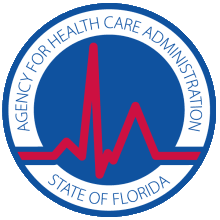
What Is Bipolar Schizoaffective Disorder?
A schizoaffective disorder is classified as a mental illness that displays symptoms of classic schizophrenia alongside symptoms from another mood disorder. It generally develops during adolescence.
Here’s what you need to know about the disorder and what you can do if you suspect you may be affected by it.
An Overview of Bipolar Schizoaffective Disorder
There are two kinds of schizoaffective disorders: depressive and bipolar. While both versions of the condition involved depressive episodes, bipolar schizoaffective disorder – much like a classic case of bipolar disorder – also include episodes of mania.
Some of the bipolar schizoaffective disorder symptoms include:
- Intense sensory hallucinations
- Delusions
- Disorganized speech and behavior
- Difficulty concentrating
- “Brain fog,” or a feeling that you are unable to think clearly
- Restlessness or listlessness
- Insomnia or hypersomnia (depending on whether you’re in a manic or depressive episode)
- Reckless and impulsive behavior during a manic episode
- Hopelessness and a severe lack of energy during a depressive episode
Risk Factors for Bipolar Schizoaffective Disorder
Bipolar schizoaffective disorder occurs in about .3% of the general population or roughly three out of every 1000 people. The condition occurs in women aged in their late teens up to their early thirties most frequently, although it can develop in anyone. It’s rare to see bipolar schizoaffective disorder in children.
The exact cause of the disorder is still unknown, but many factors come into play. There is likely a genetic component, as studies have found that bipolar schizoaffective disorder can develop in several members of the same family. It may also be dependent on specific environmental factors such as:
- High stress
- Trauma
- Certain infections
Drug use such as marijuana or other psychoactive drugs likely contributes to developing a bipolar schizoaffective disorder. An imbalance in brain chemistry and structure is suspected of playing a significant role in the development.
Diagnosis for Bipolar Schizoaffective Disorder
Diagnosis for bipolar schizoaffective disorder usually includes a mental health evaluation by either a psychiatrist or a psychologist. They will then use the information gathered, alongside a review of a patient’s medical history and a physical examination, to determine whether the disorder is fitting.
There is some debate whether bipolar schizoaffective disorder should be classified as its own condition or as a subcategory of schizophrenia. The Diagnostic and Statistical Manual of Mental Disorders, Fifth Edition (DSM-5) classifies this disorder under its own diagnosis.
The DSM gives a list of criteria for making that diagnosis, including a record of psychotic symptoms of a period longer than two weeks and recurring episodes of psychotic symptoms and mania over a more extended period.
What You Can Do About Bipolar Schizoaffective Disorder
If you suspect you may have bipolar schizoaffective disorder, treatments are available to help you manage your symptoms. Consult your doctor and psychiatric care provider about diagnosis and treatment options, including certain medications, therapy, and support networks.
Know that you can reach out to such lifelines as Mental Health America, the National Institute of Mental Health, and the National Suicide Prevention Lifeline if you need immediate support and reassurance.

We Have Helped Thousands of People Recover From Mental Health. Will You Be Next?
Give us a call anytime day or night:










